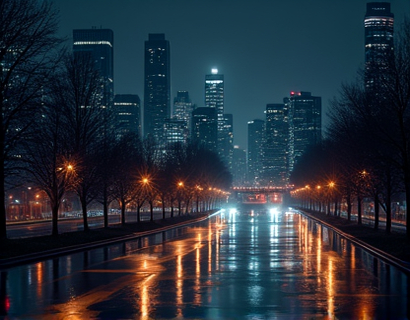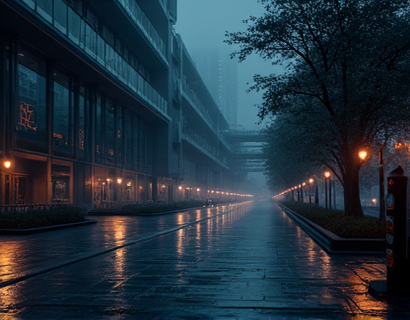Uncovering the Ancient Indus: A Comprehensive Guide for Travelers and Cultural Enthusiasts
The Indus Valley, a cradle of one of the world's oldest civilizations, beckons modern travelers and cultural enthusiasts with its enigmatic allure. Spanning across present-day Pakistan and northwestern India, this ancient land holds secrets and stories that date back over 5,000 years. This guide aims to unravel the mysteries of the Indus Valley, offering a blend of historical insights, practical travel advice, and recommendations for must-see landmarks. Whether you are a history buff, an archaeology enthusiast, or simply someone seeking a unique cultural experience, this comprehensive resource will ensure a memorable journey through this fascinating region.
Historical Background
The Indus Valley Civilization, also known as the Harappan Civilization, flourished around 2600 BCE to 1900 BCE. It is one of the three ancient civilizations of the Old World, alongside Egypt and Mesopotamia. The civilization was named after the city of Harappa, one of its major urban centers, discovered in the 1920s. At its peak, the Indus Valley Civilization covered a vast area, including parts of present-day Pakistan, northwestern India, and eastern Afghanistan. The civilization is renowned for its advanced urban planning, sophisticated water management systems, and intricate craftsmanship.
Key Characteristics of the Indus Valley Civilization
One of the most striking features of the Indus Valley Civilization is its urban planning. Cities like Mohenjo-Daro and Harappa were built with a grid system, featuring well-planned streets, drainage systems, and public baths. The Great Bath in Mohenjo-Daro, a large public bathing facility, is a testament to the civilization's advanced engineering skills. The people of the Indus Valley were skilled artisans, producing pottery, jewelry, and seals with intricate designs. The famous Indus seals, often featuring a mysterious figure with a horned headdress, are believed to have had religious or administrative significance.
Major Archaeological Sites
Visiting the archaeological sites of the Indus Valley is a must for any traveler interested in ancient civilizations. Here are some of the most significant sites to include in your itinerary:
- Mohenjo-Daro: Located in the province of Sindh, Pakistan, Mohenjo-Daro is one of the largest and best-preserved cities of the Indus Valley Civilization. The site features the Great Bath, the Granary, and numerous residential buildings. Guided tours are available, and the on-site museum provides valuable insights into the daily life and culture of the inhabitants.
- Harappa: Situated in Punjab, Pakistan, Harappa is another major urban center of the Indus Valley Civilization. The site is known for its well-preserved citadel and lower town, with artifacts on display at the on-site museum. Visitors can explore the remains of the city walls, drainage systems, and residential areas.
- Dholavira: Located in the Rann of Kutch, Gujarat, India, Dholavira is one of the least excavated but most impressive sites. The city is known for its sophisticated water management systems, including reservoirs and stepwells. The site offers a unique blend of natural beauty and historical significance.
- Rakhigarhi: Also in Haryana, India, Rakhigarhi is one of the largest but least explored Indus sites. Recent excavations have revealed significant findings, including a large citadel and extensive residential areas. The site is a treasure trove for archaeologists and a promising destination for future visits.
Cultural Insights and Daily Life
Understanding the daily life of the Indus Valley people provides a deeper appreciation of their civilization. The inhabitants were primarily agrarians, with evidence of advanced irrigation techniques and the cultivation of crops like wheat, barley, and cotton. Trade was a vital aspect of their economy, with trade routes extending to Mesopotamia and beyond. The discovery of weights and measures suggests a standardized system for trade and commerce.
Religious practices of the Indus Valley people are still a subject of debate among scholars. The presence of fire altars and the depiction of a seated yogi on seals hint at a form of worship, possibly centered around a mother goddess. The famous "Pashupati" seal, found at Mohenjo-Daro, is often interpreted as a representation of a deity, though this remains speculative.
Practical Travel Advice
Visiting the Indus Valley sites requires some planning to ensure a smooth and enriching experience. Here are some practical tips for travelers:
Best Time to Visit
The optimal time to visit the Indus Valley sites is from October to March, when the weather is mild and pleasant. Summers can be extremely hot, with temperatures often exceeding 40°C, making outdoor exploration challenging. Monsoons from July to September can also affect travel plans due to heavy rains and flooding in some areas.
Getting There
Pakistan and India have well-connected airports and railway networks. For Mohenjo-Daro and Harappa, the nearest major cities are Karachi and Lahore, respectively. Dholavira is relatively remote, and visitors may need to arrange transportation from nearby cities like Bhuj. In India, Rakhigarhi is accessible from Delhi via bus or train.
Accommodation
Accommodation options range from budget guesthouses to luxury hotels, depending on your preferences and budget. In cities like Lahore and Ahmedabad, you can find a wide range of hotels near the airports. For sites like Mohenjo-Daro and Dholavira, local guesthouses and homestays offer a more authentic experience.
Local Cuisine
Indulge in the local cuisine, which is a delightful blend of Pakistani and Indian flavors. Must-try dishes include biryani, kebabs, and various vegetarian options like dal and roti. Don't forget to sample local sweets like gulab jamun and jalebi. Water quality can be a concern, so it's advisable to drink bottled water and avoid ice in drinks.
Respect Local Customs
When visiting religious or historical sites, it's essential to dress modestly and respect local customs. For women, covering the head and wearing long pants or skirts is recommended. Photography may be restricted in certain areas, so it's best to ask permission before taking pictures. Always be mindful of your surroundings and follow the guidelines provided by local authorities.
Hidden Gems and Local Attractions
Beyond the major archaeological sites, the Indus Valley region offers a wealth of hidden gems and local attractions:
Taxila
Located near Islamabad, Taxila is a UNESCO World Heritage Site known for its ancient Buddhist and Hindu monasteries. The site includes the Jaulian and Mohra Moradu monasteries, the Dharmarajika stupa, and the Buddhist University. Taxila provides a fascinating glimpse into the region's rich cultural tapestry, spanning from the Gandhara period to the Mughal era.
Chiniot Fort
In Pakistan, the Chiniot Fort is a lesser-known but equally impressive historical site. Built in the 16th century, the fort offers panoramic views of the surrounding area. The fort's architecture is a blend of Mughal and local styles, making it a unique destination for history enthusiasts.
Kutch Desert Wildlife Sanctuary
For nature lovers, the Kutch Desert Wildlife Sanctuary in Gujarat, India, is a must-visit. This vast desert area is home to a variety of wildlife, including chinkaras, foxes, and numerous bird species. The sanctuary also features traditional Kutch villages, where visitors can experience the local way of life and craftsmanship.
Local Markets and Crafts
Explore local markets to discover traditional crafts and souvenirs. In Lahore, the Anarkali Market is a bustling hub for textiles, jewelry, and handicrafts. In Ahmedabad, the Sabarmati Market offers a wide range of goods, from handlooms to spices. Supporting local artisans not only enriches your travel experience but also helps preserve traditional crafts.
Essential Resources
For travelers planning a trip to the Indus Valley, here are some essential resources:
- Guidebooks: "The Indus Civilization: A Contemporary Perspective" by Jonathan Mark Kenoyer and "Indus: Lost Cities of the Ancient World" by Richard Meadows provide comprehensive insights into the civilization and its sites.
- Travel Websites: Websites like Lonely Planet and TripAdvisor offer detailed travel guides, including itineraries, accommodation options, and local attractions.
- Cultural Organizations: The Archaeological Survey of India and the Pakistan Archaeology Department provide valuable information on site visits, conservation efforts, and research updates.
- Local Tour Operators: Hiring a local guide or joining a guided tour can enhance your experience, offering insights and access to off-the-beaten-path locations.
Visiting the Indus Valley is more than just a trip; it's a journey through time, a connection to one of the world's most ancient civilizations. With careful planning and an open mind, you can uncover the secrets of this fascinating region and create unforgettable memories.










































